In one of the more intriguing managerial appointments so far in the Belgian Pro League going into next season, Sint-Truiden has hired German manager Thorsten Fink to replace his compatriot Bernd Hollerbach in the hot seat at the club.
Last season, Fink was in charge of two different clubs, with him in charge of both Latvian side Riga FC and Arabian Gulf League side Al Nasr.
His most notable managerial spell came between 2009 and 2011 when he was at Swiss Super League side FC Basel.
The 55-year-old won two Swiss Super League titles and one Swiss Cup.
This tactical analysis will
examine Thomas Fink’s tactics from his last two managerial stops in Latvia and the United Arab Emirates, analyzing at the same time what his style of play at STVV will likely look like from next seasononwards.
Utilising the wide channels and half spaces
When it comes to how Thorsten Fink’s coaching style and how he wants his sides to attack, a lot of their chance creation comes from the wide players in his 4-1-4-1, whether it be the wide midfielders or the advancing fullbacks.
Fink also looks for his side to utilise the half spaces in attack, as well as looking to have players sit in between the opposition’s lines and receive possession in dangerous areas.
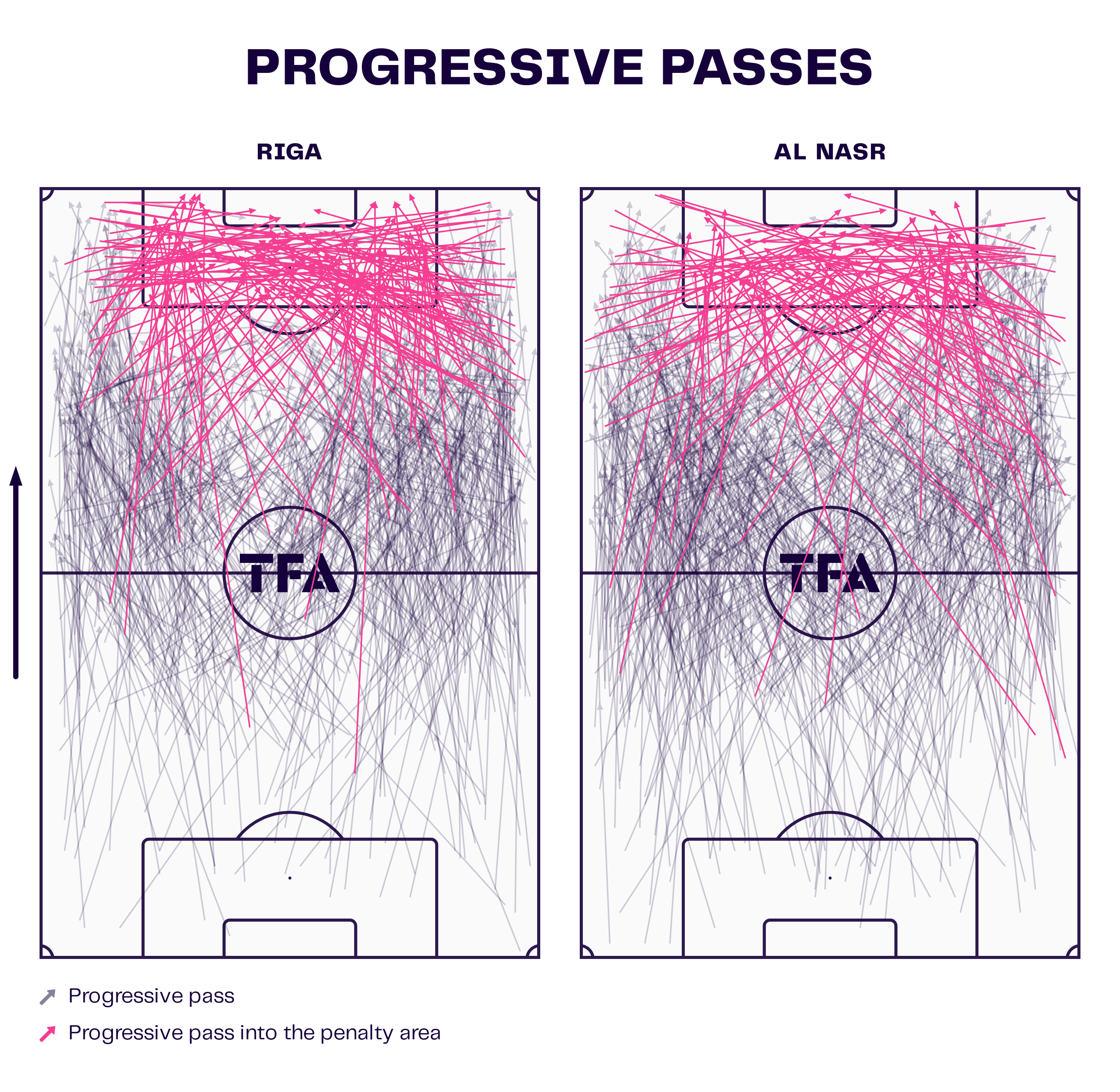
The data viz graphic above shows the progressive pass maps of both Riga and Al Nasr last season when the German was in charge of the clubs.
We can spot a similarity pretty quickly in the way both sides look to create chances.
A majority of the progressive passes into the penalty area originated from the wide channels, illustrating the heavy use of this method to create chances.
Along with the use of movements in the half spaces and overloads at times, it has been a successful tactic that Thorsten Fink has implemented in both of his recent managerial jobs in the attacking phase of play.
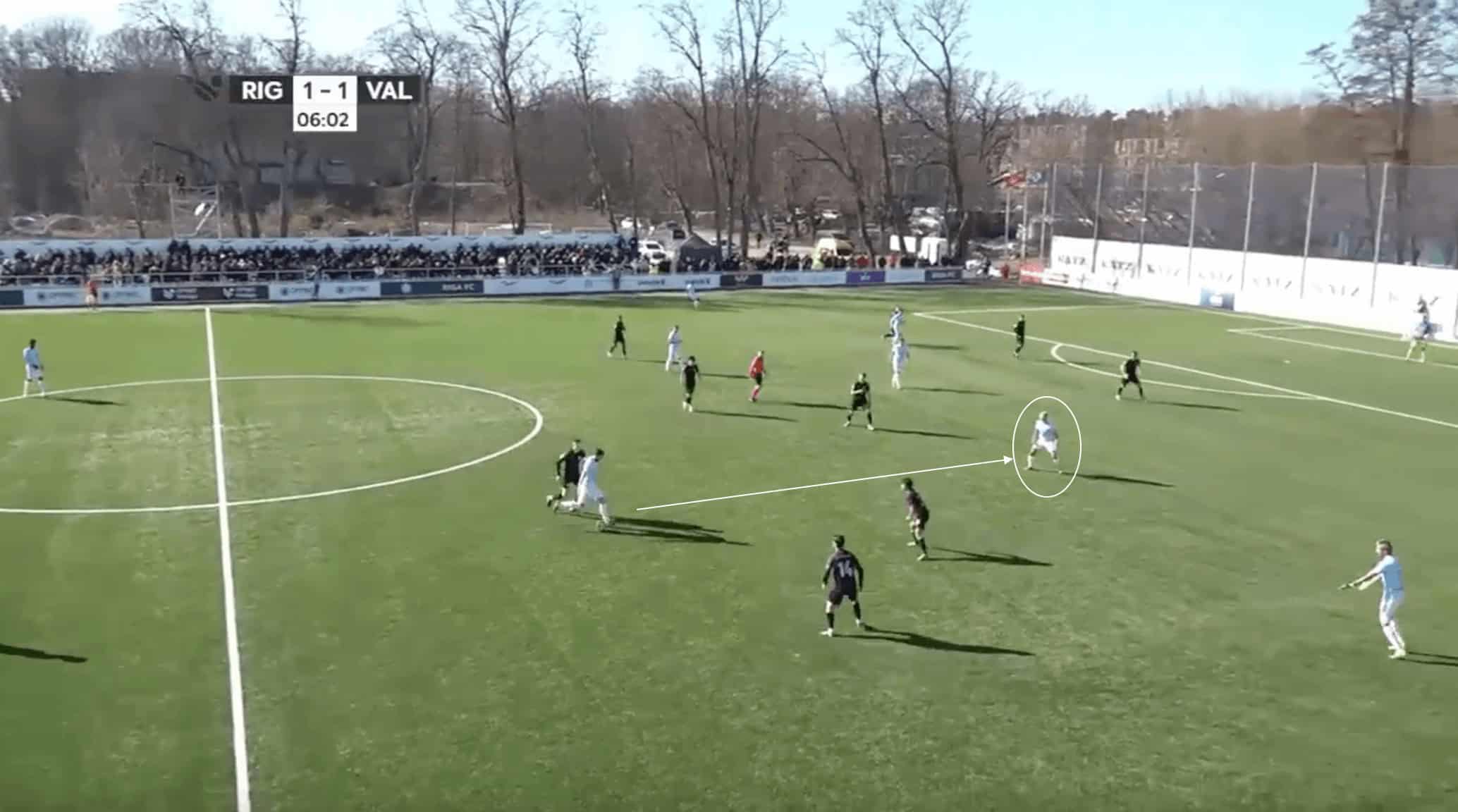
This first example is two parts, with the first phase of this attacking move from Riga FC shown above.
In this attacking phase of play, the Riga midfielder is able to position himself between the opposition’s midfield and defensive lines.
This good positioning allows him to receive the ball with no pressure from any opposition defender, which allows him to get the ball under control and turn to drive into space.
However, due to the midfielder’s positioning, he is able to create an overload against the opposition defence in the wide channel, with him able to find the overlapping fullback out wide.
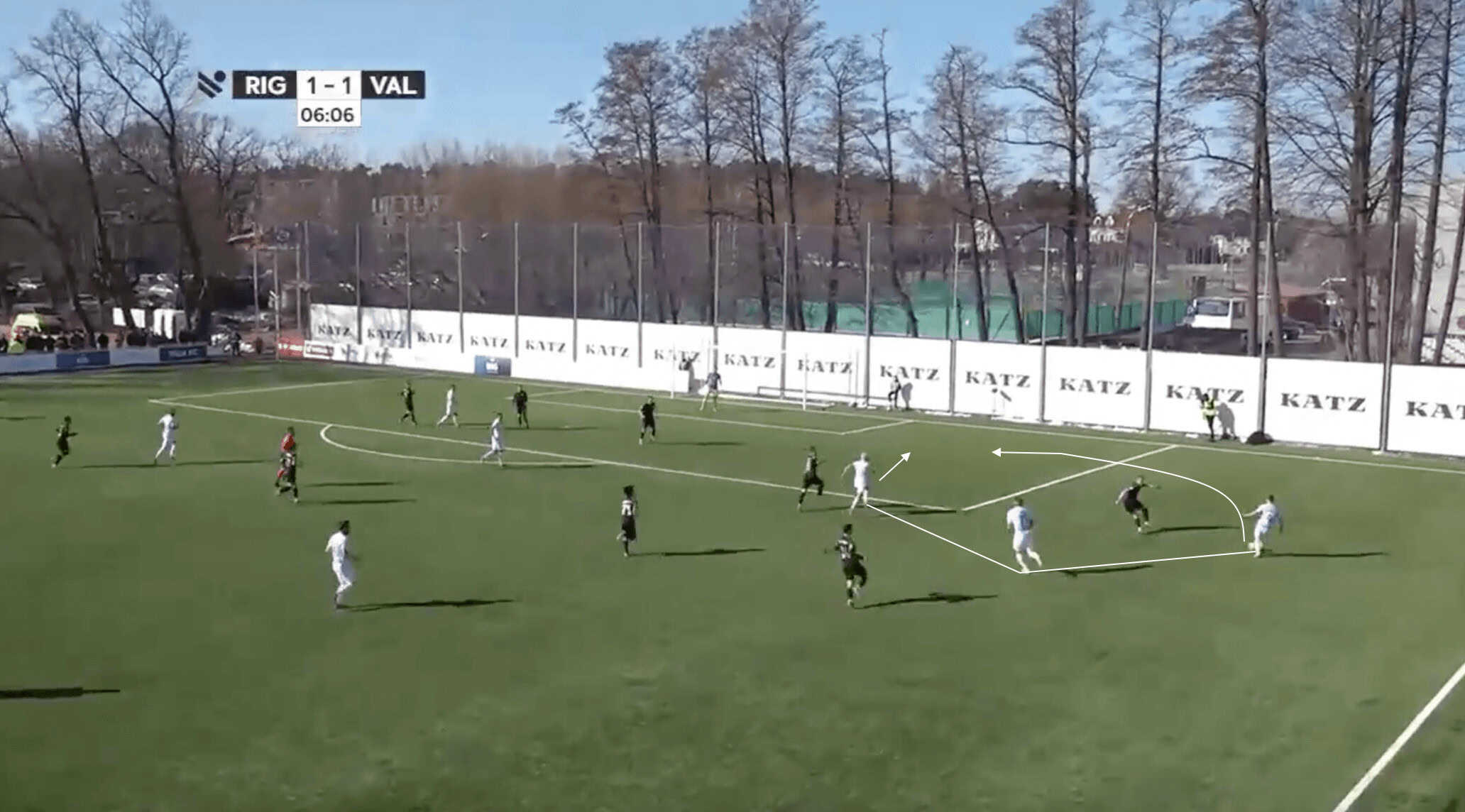
The image above shows the second phase of this attacking move from Riga FC once the midfielder receives the ball in the halfspace between the opposition’s lines.
His ensuing pass is played out wide to the overlapping fullback who, with the wide midfielder and central midfielder, has created an overload against the opposition defence.
This allows the central midfielder to continue making an advancing run into the penalty area, with him positioned in front of the opposition’s centre-back.
The ensuing pass from the fullback results in a 1-2 with this advancing player who after receiving the ball is able to play a dangerous ball across the box, perfectly placed behind the defence and in front of the goalkeeper.
Unfortunately, no Riga player is able to get onto the end of the ball, with it rolling out of play on the opposite side.
Though this ball across the box does not result in a goal-scoring chance, it still illustrates the danger this type of attacking move can cause and why Fink frequently uses it with the sides he manages.
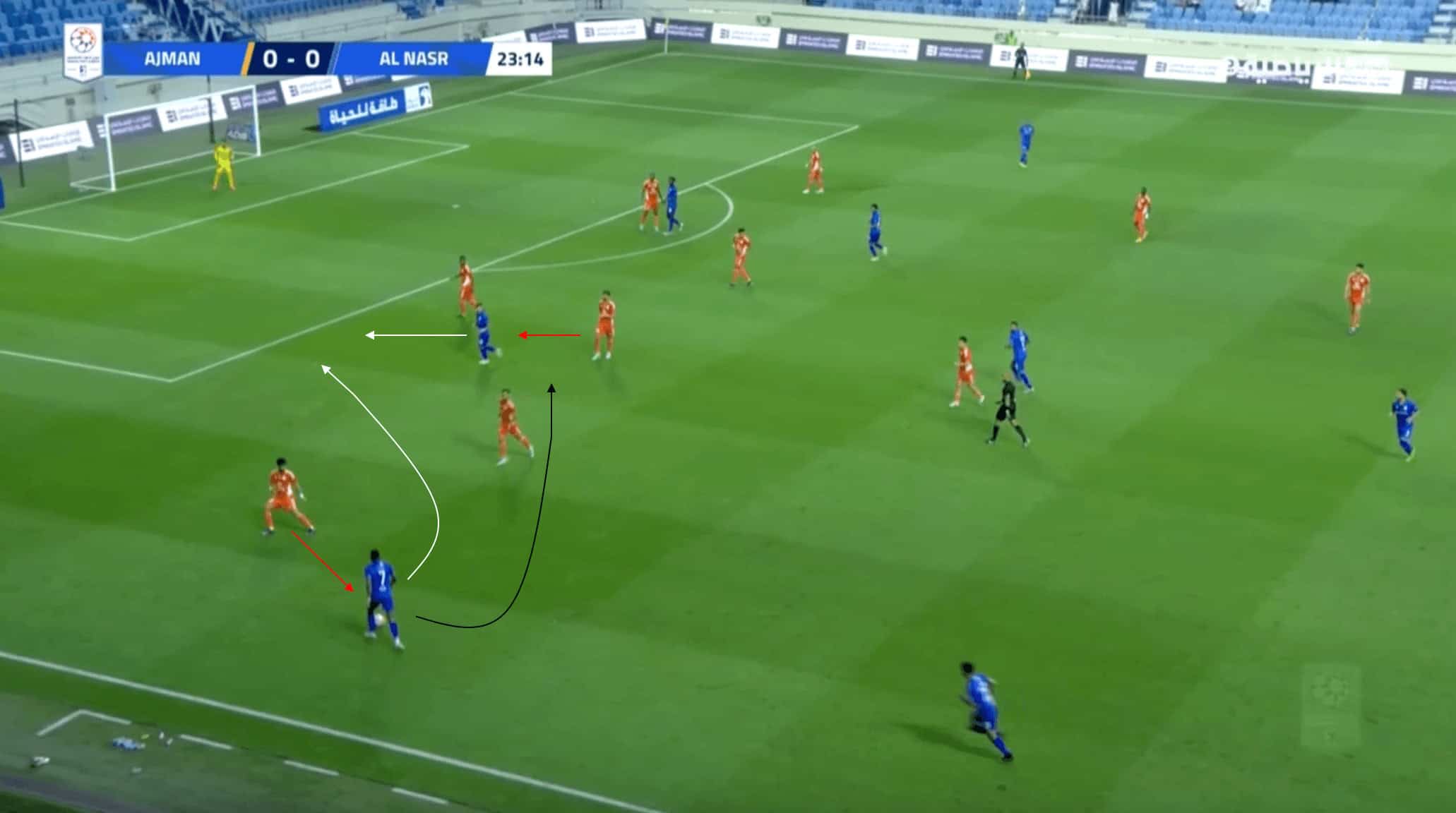
The image above shows another example of this attacking style of play that Fink looks to use, this time from his spell in charge of Al Nasr.
In the phase of play above, the ball is in the possession of the wide midfielder, and the fullback is looking to make an overlapping run beyond.
The wide midfielder in possession looked to take the opposition defender on, but he stepped up and out of position, opening a gap in the half space.
This allowed the more advanced Al Nasr player to move unmarked into the space just in front of the opposition’s defensive line.
The player in possession plays the ball to him before moving inside to the space left vacated by the opposition defensive midfielder who decided to follow the ball receiver.
This allows the wide player to receive the ball back with a first-time pass from the advanced Al Nasr player in enough space to attempt a shot.
As this section has shown, Thorsten Fink looks for his sides to stretch the opposition’s defence during the attacking phases of play, with the attacking shape looking almost like a 3-5-2 at times.
The German manager also wants his sides to attack quickly, with one-touch passing being another theme that is relatively commonplace in the final third.
What is clear is that Fink will definitely bring a more attack-minded style of football to STVV, something that will definitely appeal to the Belgian club’s fans.
Build up shape and the role of the single pivot
Thorsten Fink prefers a methodical approach to build-up play. His sides look to hold the majority of possession and slowly progress the ball from back to front.
The key piece of Thorsten Fink’s build-up style is the single-pivot defensive midfielder in his preferred 4-1-4-1 formation.
This player’s role is to bridge the gap between defence and attack, allowing the German tactician’s sides to play through the middle and penetrate opposition lines.
Thorsten Fink’s build-up shape also looks to stretch out the opposition’s defences but can also allow them to progress the ball through the wide channels if the opposition’s defence stays narrow.
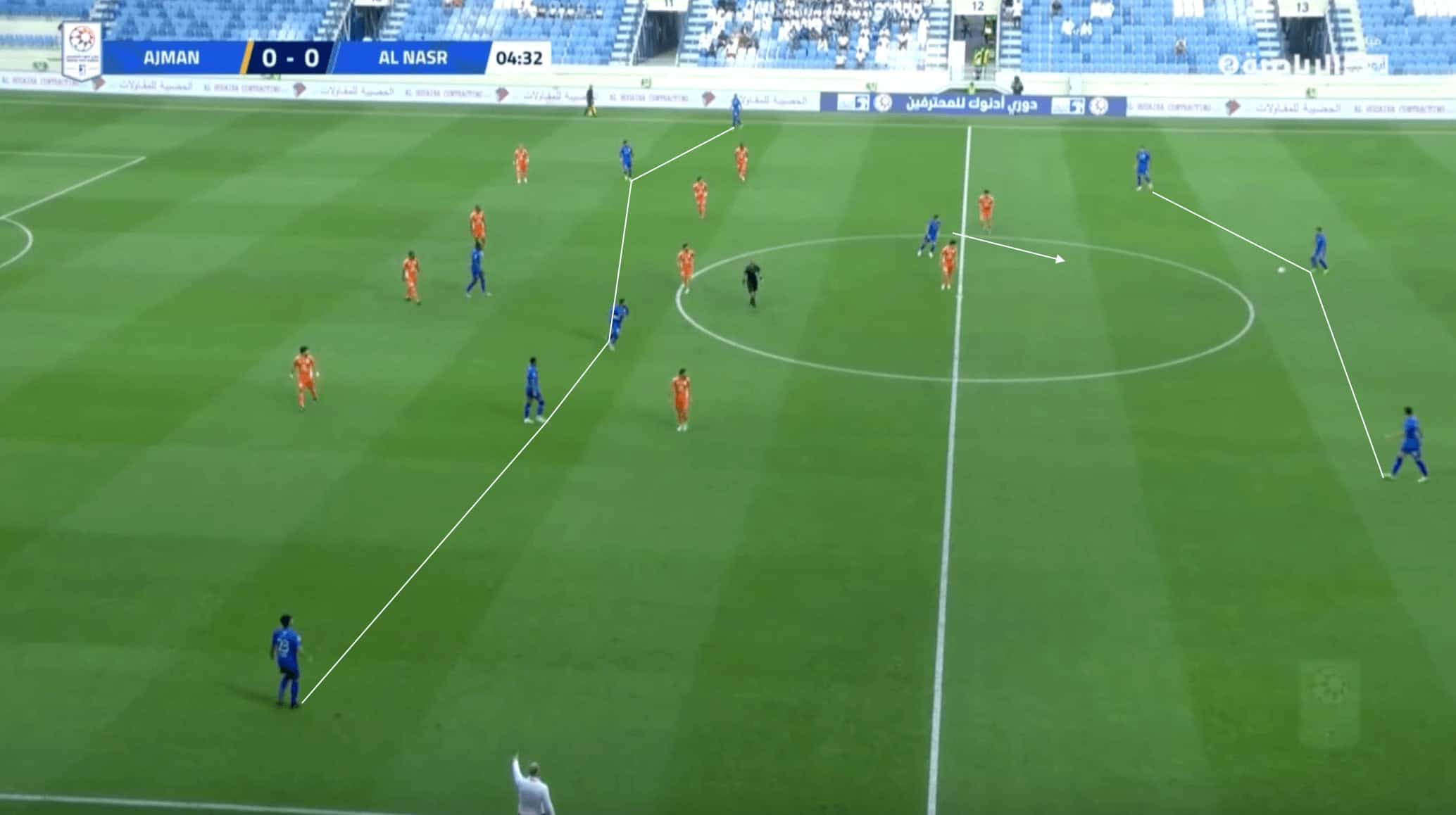
The image above shows an example of the build-up shape that Thorsten Fink’s Al Nasr side had when he was in charge.
As the example above illustrates, the shape turns into a 3-1-5-1, with one of the fullbacks dropping in to form a back three while the other pushes high to keep the width.
Notice as well the positioning of the single pivot.
The position he takes up allows him to keep the two opposition forwards from putting pressure on the defenders while they are in possession, therefore giving them more time to assess their options.
He also is able to be a bridge between the defenders and the attackers if necessary.
In this specific phase of play, however, the ball is circulated out wide to the fullback, who holds the width on the near touchline.
This build-up shape that Fink uses looks to stretch out opposition defensive lines, opening up gaps centrally where players are able to sit in the half-spaces and receive the ball unmarked, as the previous section illustrated.
However, when the opposition defence stays narrow, like it does above, Al Nasr can play the ball wide and progress into the opposition’s final third through that route.
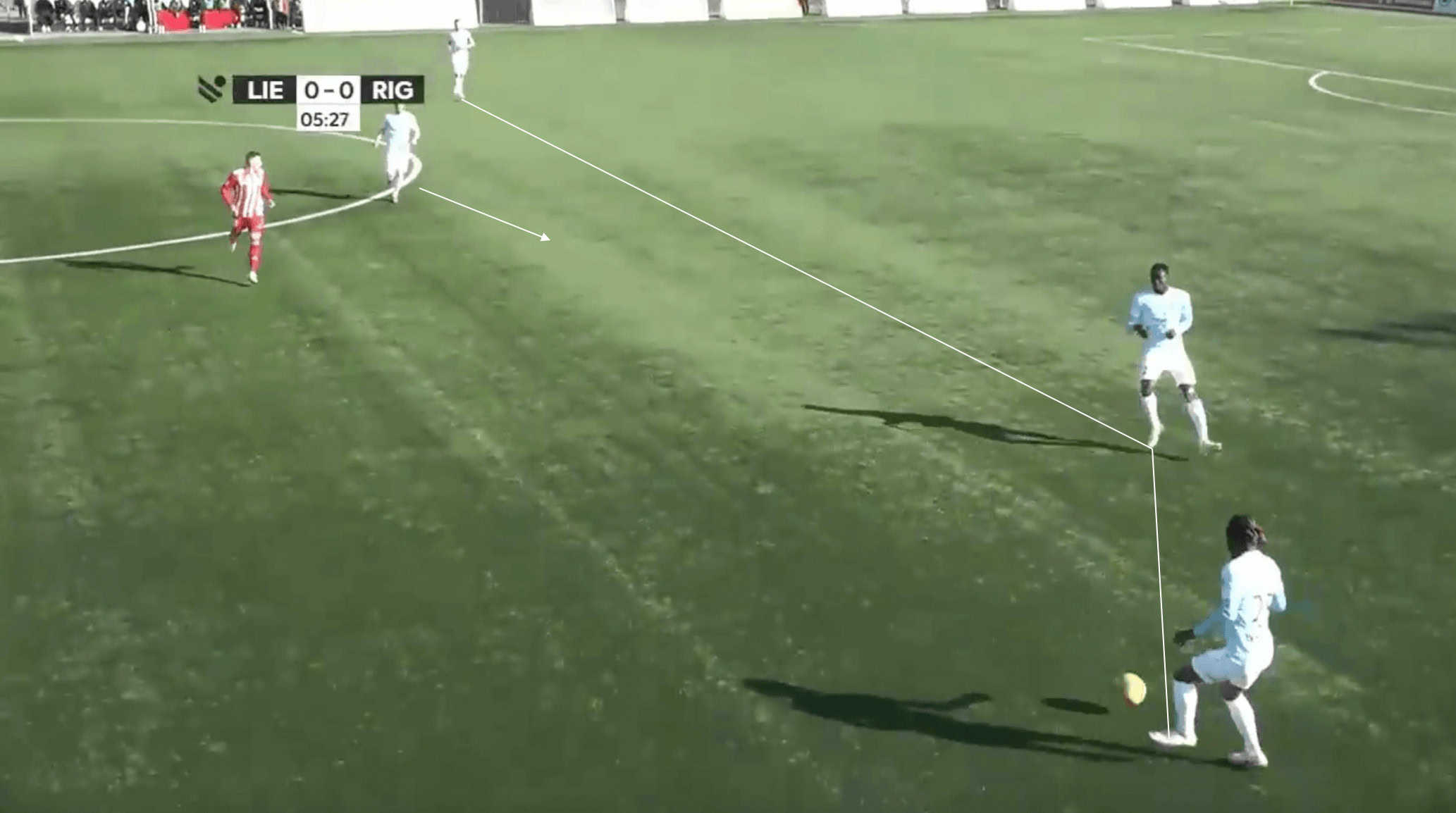
This image above again sort of shows the role of the single pivot in build-up phases for Thorsten Fink’s coaching style.
In the phase of play above from a match when he was in charge of Riga, we can see that it is again a back-three shape in the build-up, with the single pivot staying deeper.
This allows him to either drop in and form a back four if needed or be the bridge between the defence and attack.
Though not shown, further up the pitch is the same midfielder five and lone forward, with Riga looking to stretch the opposition’s defence to make space centrally.
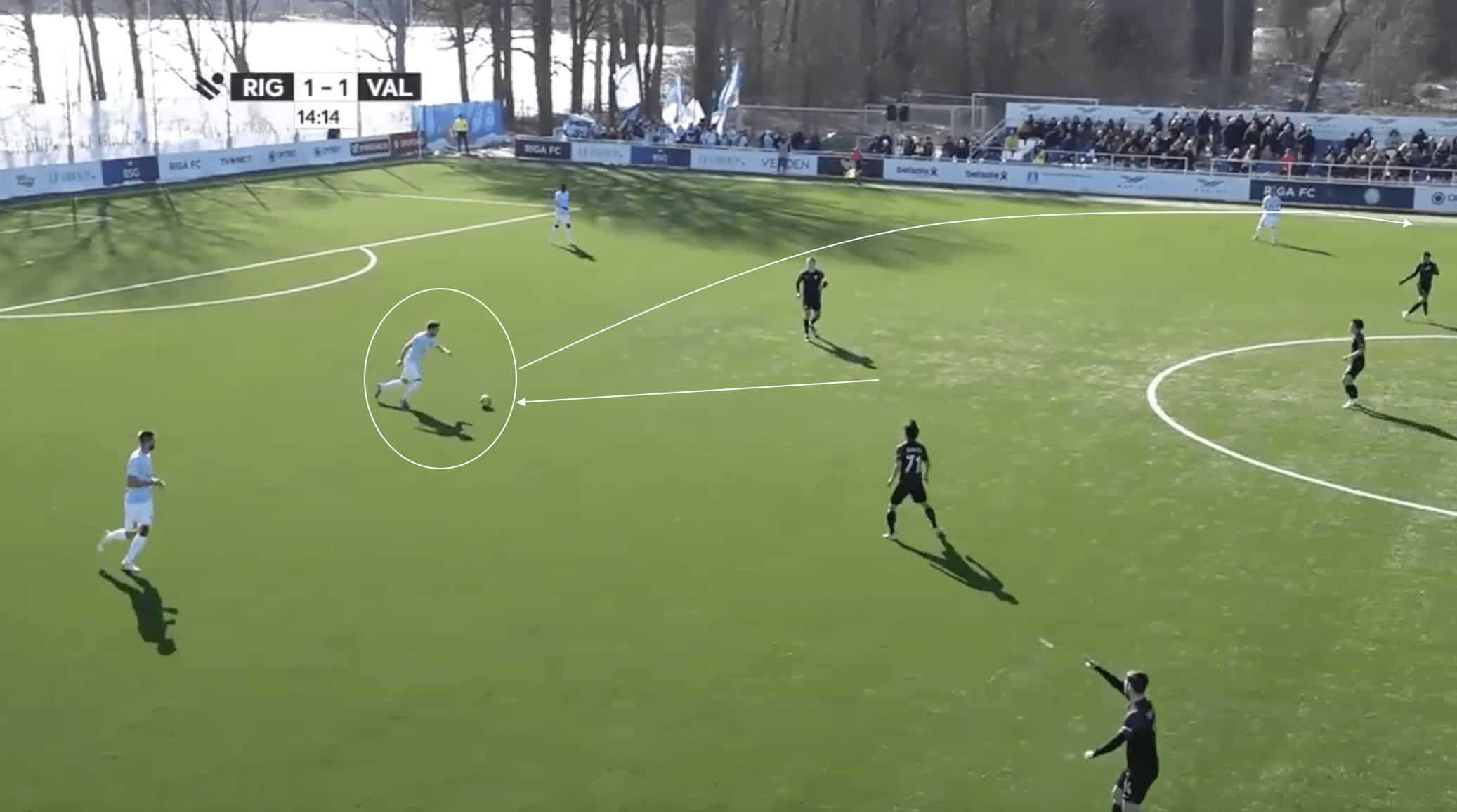
The image above shows another example of the build-up shape.
The positioning of the single pivot allows Riga to continue progressing the ball.
In the phase of play above, the defensive midfielder drops into the backline to receive possession from the Riga centre-back, which allows him to then play a long diagonal into the feet of the wide midfielder who is hugging the far touchline.
This example shows the role that the single pivot plays at times when linking the defence with the attack
. This pass allows Riga to continue building, bypassing the opposition’s press and showing the crucial role the single pivot plays in Thorsten Fink’s style of build-upplay.
As this section has shown, under Thorsten Fink, STVV will likely look to become a more possession-based side. While that may not be entirely possible for the German manager to achieve overnight, a slow implementation of some of these build-up principles will likely be a likely solution while he starts to mould the squad in his image.
Conclusion
This tactical analysis has only shown a brief look into the tactics that Thorsten Fink will likely implement from next season at Sint-Truiden.
The former Bayern Munich player had a very good playing career, winning multiple Bundesliga titles over Borussia Dortmund
and a UEFA Champions League title, beating Real Madrid inthe final.
While STVV is not at the level of clubs of this stature, it will be intriguing to see if Fink can help the Belgian club climb up the table next season. The ultimate goal is likely to finish in a European playoff place.





Comments